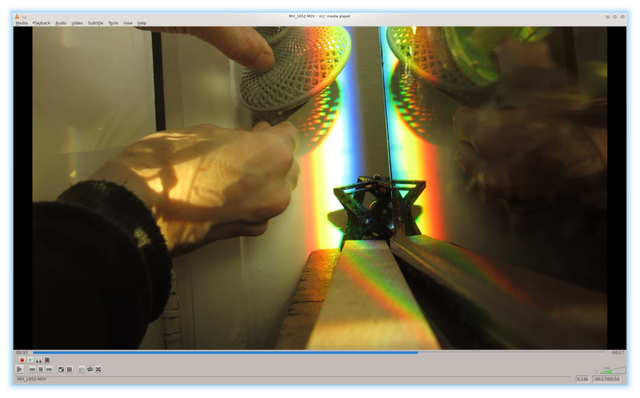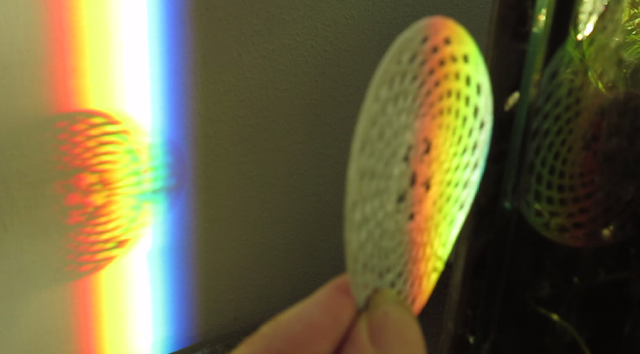You are viewing a single comment's thread from:
RE: The Big Bang's Big Assumption
just another assumption...
You don't need to go to the edge of the universe
Another 'assumption' is that Newton's color theory is ok.
Goethe added to it, but is ignored/neglected.
Green is not a 'primary color' but a mix when blue and yellow meet :
i saw so my self when the sun shone through my aquarium,
and red-yellow, WHITE, cyan-blue rainbow lines appeared.

only the shadow of the thing makes yellow meet with blue and make green appear.
see how the colors tend towards the thing ?
the shadow of the thing seems to draw the blue ,
and there's even a lenticular bowwave between green and blue.
Let's call it 'agitational lensing' as it bugs the hell outta me.

Very interesting. I'd be interested in seeing where the light is physically passing through the aquarium and at what angle, and the glass of the aquarium.
If I may offer my take on this:
Light is waves of infinitesimal particles and each wavelength is just a matter of how relatively large one color's particles are compared to another. Due to their immeasurably small mass, the only way we can determine any comparison between the particles is by "wavelength." This, though, is ultimately a measure of the mass of the particles.
With what is going on here, it must be the shape of the aquarium's glass and the angle that the light is hitting it that is playing a role in producing the white streak at the center. White is just a conglomeration of masses of each color together, and if the shape of glass is such that the angle the light hits it is direct enough it may only lens enough of the various particles so as to partially deflect and produce outer streaks, while the central area is still a combination of all colors. (See the area of Prism 2 below closest to the prism on the right side where white still exists before the colors branch out enough to be separated.)
As far as putting an intermediary object, I love it! It reminds me of the double-slit experiment, where the infinitesimal particles of light passing a local gradient in gravity caused by a slit wall leads to deflection to produce a wave. Due to the small size of the slit, essentially all light passing through and not at the exact center where the local gravity is uniform is deflected to a degree, with larger deflection the closer to the slit the particles pass.
In your images' case, I would say that this gravitational lensing effect is assisting in dispersing more colors outward so that the colors that already were spread out but still had some particles in the center are deflected sufficiently to reveal the green that was a higher percentage of the white light than normal due to the other colors being partially dispersed outward. The intermediate object, then, just further disperses the remaining colors aside so that the green particles are able to show their color, as they are a sufficiently high percentage of the light to then produce the specific color of green.
This is how a prism disperses light:
Prism 1
Prism 2
What is happening in this image (sorry not sure why it won't let me embed it directly in comment section) is that where the light meets the glass there is a local imbalance in gravity. This causes gravitational lensing at the edge of the prism so that its path through the prism is deflected. Once it reaches the opposite side, it is then exposed to a second gravitational imbalance, which further lenses the light. The higher frequency lights (blue, indigo, violet) pass more slowly through the medium and so they are exposed to the gravitational lensing effects for a longer period of time relatively, and this causes them to be lensed more than the lower frequencies (red, orange, yellow).
Regarding "primary colors," this is just a term that humans use. It is not really related to the fundamentals of reality but rather is a label and nothing more. Even red could be said to be a combination of infrared and some other color, in a way. We are just limited in how we see things and it makes us call things primary colors because they happen to not be combinable by the other colors that we see in the visible light spectrum.
Hope that made sense, thanks for your comment and reading my article! All observations can be reduced to the result of gravity in the infinite universe.
:-D still re-reading your article & answer, but i really ... phew... I dunno anything ;-) Thanks for trying so hard though :-D !